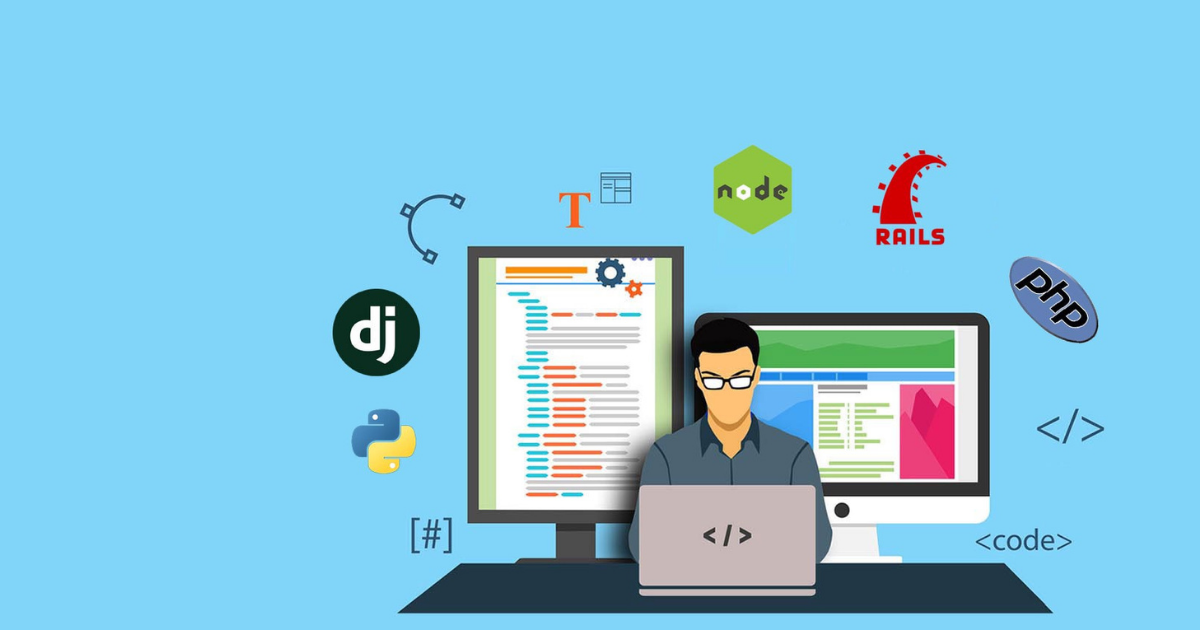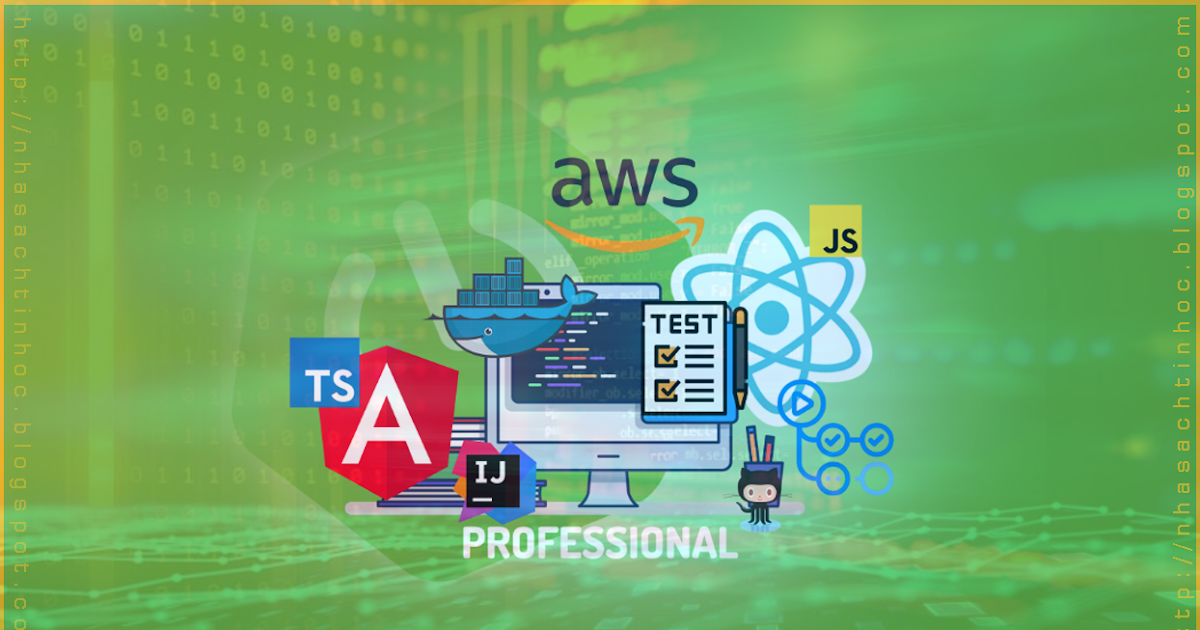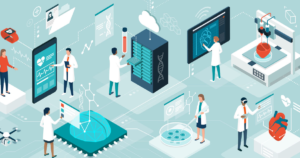Becoming a Full Stack Developer: The Path Forward
The Exciting Journey of Becoming a Full Stack Developer
The journey to becoming a full stack developer is a thrilling adventure filled with endless possibilities. It’s not just a career; it’s a path that allows you to shape the digital world, one line of code at a time. If you’re passionate about technology and eager to embrace both the front-end and back-end realms of development, then this path might be calling your name.
What Is a Full Stack Developer?
Before we delve into the intricate details, it’s essential to understand what a full stack developer is. A full stack developer is someone who possesses the skills and knowledge to work on both the client side (front-end) and server side (back-end) of web applications. They serve as the bridge between what users see and interact with and what happens behind the scenes.
Understanding Full Stack Development

Exploring the Two Halves of Full Stack
Full stack development can be compared to a coin with two distinct sides: the front-end and the back-end. To excel in this field, you must become proficient in both aspects, seamlessly connecting them to create a unified and engaging user experience.
The front-end is the visible part of a website or web application. It’s what users see and interact with. To master the front-end, you need a strong foundation in technologies like HTML, CSS, and JavaScript. HTML (Hypertext Markup Language) provides the structure of web pages, defining elements like headings, paragraphs, and images. CSS (Cascading Style Sheets) controls the presentation and layout, determining how elements are styled and positioned. JavaScript adds interactivity, allowing you to create dynamic and responsive user interfaces.
Embracing Front-end Frameworks
Front-end frameworks are essential tools that simplify and accelerate web development. They provide pre-built components, libraries, and best practices, enabling you to build robust and user-friendly applications efficiently. Here are some popular front-end frameworks:
Angular: A Comprehensive Guide
Angular is a powerful front-end framework developed and maintained by Google. It follows a component-based architecture and offers features like two-way data binding, dependency injection, and a robust ecosystem of libraries and tools. Angular is an excellent choice for building complex, large-scale applications. It allows you to create dynamic and feature-rich user interfaces while promoting code organization and maintainability.
React: The Darling of UI
React is a widely adopted front-end library developed by Facebook. It’s known for its simplicity, performance, and the virtual DOM (Document Object Model). React’s component-based approach and declarative syntax make it an excellent choice for building user interfaces that can handle real-time data updates efficiently. React’s popularity has led to the creation of a vast community and numerous third-party libraries and tools.
Vue.js: Simple Yet Powerful
Vue.js is a progressive JavaScript framework designed for building user interfaces. It’s known for its simplicity and adaptability. Vue.js provides a flexible and incremental approach to development, allowing you to integrate it into existing projects with ease. Despite its simplicity, Vue.js offers a robust set of features, including a reactive data-binding system and component-based architecture.
Laying the Foundation
Essential Prerequisites for Full Stack Development
Before embarking on this exciting journey, you’ll need to gather your tools. These essential prerequisites include programming languages, version control systems, and a solid understanding of databases. They are the building blocks of your full stack developer foundation.
Programming Languages
Your first task is to choose the programming languages that resonate with you. Each language has its own unique strengths, and you’ll discover how they play a crucial role in building web applications.
JavaScript – The Heart of Web Development: JavaScript is the foundational language of the web. It powers interactivity, making web applications responsive and dynamic. Explore JavaScript’s syntax, functions, and event handling to understand its versatility.
HTML – The Structure of the Web: HTML is the language that structures web pages. Learn how to create elements, define the layout, and add content to web pages. Mastering HTML is like building the framework of a house before decorating it.
CSS – Styling the Web: CSS is the artist’s palette in web development. It allows you to apply styles, create layouts, and make your web pages visually appealing. Dive into CSS properties, selectors, and responsive design techniques to craft stunning user interfaces.
Additional Languages: Depending on your project and interests, you might explore other languages like Python, Ruby, or Java for back-end development. These languages bring different strengths and are crucial for the full stack developer’s toolkit.
Version Control Systems
Version control systems, especially Git, are your safety net in the world of coding. They allow you to track changes, collaborate seamlessly, and manage your projects efficiently.
Git Fundamentals: Git is the go-to version control system for developers. Learn how to initialize a Git repository, commit changes, create branches, and collaborate with others. Git empowers you to work confidently, knowing that you can always revert to a previous state.
GitHub and GitLab: Explore platforms like GitHub and GitLab, which provide hosting for your Git repositories. These platforms offer a collaborative space for developers to share code, collaborate on projects, and contribute to open-source communities.
Databases
Databases are the storehouses of information in web applications. You’ll delve into the world of databases and learn how to interact with them, whether it’s a relational database or a NoSQL solution.
Understanding Relational Databases: Dive into the world of relational databases like MySQL, PostgreSQL, or SQLite. Learn how to design schemas, create tables, and write SQL queries. Discover the power of relationships between data and how to maintain data integrity.
Exploring NoSQL Solutions: NoSQL databases like MongoDB and Cassandra provide flexibility for unstructured data. Explore their document-oriented, key-value, or columnar data storage models. Understand when NoSQL databases are the right choice for your projects.
Database Query Languages: Beyond traditional SQL, explore query languages specific to certain databases. For example, MongoDB uses a querying language called BSON, while Neo4j, a graph database, uses the Cypher query language. These languages enable you to interact effectively with the data stored in these systems.
Building Strong Fundamentals
To build a sturdy house, you need a solid foundation. In full stack development, the foundation is composed of HTML, CSS, and JavaScript. These technologies are the backbone of web development.
Front-end Development
HTML, CSS, and JavaScript: The Pillars of Web Development
HTML – The Content Structure: HTML (Hypertext Markup Language) is the language that structures the content on web pages. Learn how to create elements, headings, paragraphs, lists, and links. Dive into semantic HTML to ensure accessibility and search engine optimization.
CSS – The Styling Wizardry: CSS (Cascading Style Sheets) is your artistic tool for web design. Master the art of styling by understanding selectors, properties, and values. Create responsive layouts that adapt to different screen sizes. Explore CSS frameworks like Bootstrap and Materialize for accelerated development.
JavaScript – The Dynamic Engine: JavaScript is the language that adds interactivity to web pages. Delve into JavaScript to understand variables, functions, and control structures. Learn about event handling to make your web pages respond to user actions. Explore libraries like jQuery for efficient DOM manipulation.
Front-end Frameworks
Front-end frameworks take your front-end development skills to the next level. We’ll explore popular frameworks like Angular, React, and Vue.js, and understand their unique advantages.
Angular: A Comprehensive Guide
Angular is a comprehensive front-end framework developed by Google. We’ll break down its architecture, components, and data binding, empowering you to build complex web applications with ease.
React: The Darling of UI
React is the go-to choice for building user interfaces. Learn about the virtual DOM, components, and state management, and understand why React is loved by developers worldwide.
Vue.js: Simple Yet Powerful
Vue.js, often dubbed the “progressive framework,” combines simplicity with powerful features. Discover its reactivity, templating, and single-file components, making it an excellent choice for building user interfaces.
Back-end Development
The Engine Behind the Scenes
While the front-end is what users interact with, the back-end is the engine that powers the scenes. It’s responsible for processing data, handling requests, and ensuring security. To excel in back-end development, you need to delve into the following aspects:
Server-Side Languages
Server-side languages are the workhorses of the back-end. They are responsible for processing requests, connecting to databases, and generating dynamic content. Here are some server-side languages you might encounter in the world of full stack development:
JavaScript (Node.js): The JavaScript on the Server
Node.js is a server-side JavaScript runtime that allows you to build scalable and efficient back-end applications. It’s known for its event-driven, non-blocking I/O model, which makes it particularly well-suited for handling a large number of simultaneous connections. Node.js has a vast ecosystem of libraries and modules, making it a popular choice for building real-time applications, APIs, and microservices.
Ruby (Ruby on Rails): Convention Over Configuration
Ruby on Rails, often referred to as Rails, is a web application framework written in Ruby. Rails follows the principle of “convention over configuration,” which means it comes with sensible defaults and conventions, reducing the need for explicit configuration. It promotes the use of clean and maintainable code, making it an excellent choice for rapidly developing web applications. Rails provides a wealth of built-in tools and libraries for tasks such as database management, authentication, and testing.
Python (Django): Python’s Powerhouse
Django is a high-level Python web framework known for its simplicity and robustness. It follows the Model-View-Controller (MVC) architectural pattern, which promotes the separation of concerns and code organization. Django comes with a powerful Object-Relational Mapping (ORM) system, authentication mechanisms, and an admin interface for managing applications’ data. It’s a great choice for building secure and maintainable web applications.
Databases and Data Management

Database Fundamentals
Databases are the foundation of data storage and retrieval in web applications. They are the virtual vaults where you store and retrieve data, making them an integral part of full stack development. To understand the role of databases, it’s essential to grasp the following concepts:
SQL vs. NoSQL
Databases come in two major categories: SQL (Structured Query Language) and NoSQL (Not Only SQL). Each category has its strengths and use cases:
Relational Databases
Relational databases are the traditional choice for structured data storage. They are based on the principles of the relational model and use tables to store data. Relational databases are known for their data integrity, consistency, and ability to establish relationships between different tables. They are an excellent choice for applications that require complex queries and transactions.
Document Stores
NoSQL databases, particularly document stores, provide flexibility for unstructured data. Document stores store data in a semi-structured format, often using formats like JSON or BSON (Binary JSON). This flexibility is beneficial for applications with constantly changing data structures. Document stores are widely used for content management systems, e-commerce platforms, and real-time applications.
Data Modeling and Database Design
Effective data modeling and database design are fundamental to building efficient and scalable web applications. These processes involve defining the structure of your data, relationships between entities, and optimizing the database for performance. Key concepts in data modeling and design include:
Normalization
Normalization is a process that minimizes data redundancy and ensures data consistency. It involves breaking down data into separate tables to eliminate duplicate information. Normalization helps maintain data integrity and improves query performance. Common forms of normalization include First Normal Form (1NF), Second Normal Form (2NF), and Third Normal Form (3NF).
Indexing and Optimization
Indexing is a technique used to enhance the speed of data retrieval operations. Indexes are data structures that store a small portion of the data set in an optimized form. This allows the database management system to quickly locate and retrieve data. Proper indexing can significantly improve query performance. However, excessive indexing can also have a negative impact, so it’s crucial to strike a balance.
Data Security
Data security is a paramount concern in full stack development. The security of the data stored in your database is vital for the privacy and integrity of your application. Security measures include:
Authentication: Verifying the identity of users and ensuring that only authorized individuals can access and modify data.
Authorization: Specifying what actions users are permitted to perform within the application, based on their roles and permissions.
Encryption: Protecting data by converting it into an unreadable format, which can only be decrypted with a valid key.
Full Stack Development Tools
Essential Development Tools
The world of full stack development is enriched with a plethora of tools that simplify and enhance the development process. Here are some of the essential tools you’ll encounter on your journey:
Text Editors and IDEs
Text editors and Integrated Development Environments (IDEs) are your primary workspaces. They provide a platform for writing code, offering features like syntax highlighting, code completion, and version control integration. Here are some popular choices:
Visual Studio Code: Developed by Microsoft, Visual Studio Code (VS Code) is a highly extensible code editor known for its speed and robust features. It supports a wide range of programming languages and has a vast collection of extensions, making it a top choice for full stack developers.
Sublime Text: Sublime Text is a lightweight and fast text editor that appeals to developers for its simplicity and performance. It provides a distraction-free writing environment and offers a customizable interface.
Version Control with Git
Version control is essential for tracking changes in your code, collaborating with others, and ensuring codebase integrity. Git is the most widely used version control system in the world. It allows you to:
Track changes: Git tracks all modifications made to your codebase, providing a detailed history of who made each change and when.
Collaborate effectively: Git allows multiple developers to work on the same project simultaneously. It offers mechanisms for merging changes and resolving conflicts.
Roll back to previous versions: Git enables you to return to previous versions of your code, which can be a lifesaver when issues arise.
Debugging and Testing
Bugs are inevitable in the world of software development. Effective debugging and testing practices are essential to maintaining a reliable and robust codebase.
DevOps for Full Stack Developers
DevOps, which stands for Development and Operations, is a set of practices and principles that aim to automate and integrate the processes of software development and IT operations. It focuses on collaboration, communication, and automation to improve the efficiency of the development and deployment pipeline. As a full stack developer, understanding DevOps is crucial for building and maintaining applications. DevOps encompasses various aspects, including:
Continuous Integration and Deployment (CI/CD)
Continuous Integration (CI) and Continuous Deployment (CD) are practices that automate the building, testing, and deployment of your application. CI ensures that code changes are regularly integrated into a shared repository and tested automatically. CD takes this a step further by automatically deploying code changes to production or staging environments after passing tests. CI/CD pipelines are the backbone of modern software development, offering speed, consistency, and reliability.
Containerization with Docker
Docker is a platform for developing, shipping, and running applications in containers. Containers are lightweight, standalone, and executable packages that include everything needed to run a piece of software, including code, runtime, system tools, and libraries. Docker simplifies application deployment by ensuring that the environment remains consistent across different stages of development and production. It’s particularly beneficial for microservices-based architectures.
Cloud Services
Cloud services provide scalable infrastructure for deploying and managing web applications. Cloud providers offer a wide range of services, including virtual machines, storage, databases, and machine learning capabilities. Here are some popular cloud service providers:
Amazon Web Services (AWS): AWS is one of the largest and most widely used cloud service providers. It offers a vast ecosystem of services and tools, including virtual machines, databases, and machine learning services. AWS provides flexibility and scalability, making it suitable for a wide range of applications.
Microsoft Azure: Microsoft Azure is a cloud computing platform and infrastructure created by Microsoft. It offers a wide variety of services, including virtual machines, databases, and developer tools. Azure is known for its seamless integration with Microsoft products and services.
Google Cloud Platform (GCP): Google Cloud Platform is Google’s cloud computing service. It provides a wide range of cloud services, including machine learning, big data, and storage. GCP is recognized for its data analytics and machine learning capabilities.
Web Security

Understanding Web Security
Web security is a critical aspect of full stack development. In an era when data breaches and cyberattacks are prevalent, safeguarding your applications and user data is of paramount importance. To understand web security fully, you need to delve into the following areas:
Common Web Vulnerabilities
Hackers are continuously seeking vulnerabilities to exploit. Understanding common web vulnerabilities is crucial for fortifying your applications against potential threats. Here are a few vulnerabilities to be aware of:
Cross-Site Scripting (XSS): XSS occurs when an attacker injects malicious scripts into web pages viewed by other users. These scripts can steal user data, manipulate web content, and perform other malicious actions. Understanding how to prevent and mitigate XSS is essential.
SQL Injection: SQL injection is a technique where an attacker inserts malicious SQL queries into input fields to gain unauthorized access to a database. Proper input validation and using prepared statements can mitigate this vulnerability.
Cross-Site Request Forgery (CSRF): CSRF attacks trick users into performing unintended actions on a web application in which they are authenticated. Implementing anti-CSRF tokens and validating requests can protect your application from this threat.
Security Best Practices for Secure Coding
Security should be a top priority throughout the development process. To ensure that your code is secure, follow these best practices:
Input Validation: Always validate and sanitize user inputs to prevent malicious code from entering your application.
Authentication and Authorization: Implement strong authentication mechanisms, and enforce role-based access control to ensure that users only have access to the resources they are authorized to use.
Secure Data Storage: Store sensitive data, such as passwords and personal information, in a secure manner. Use encryption and hashing to protect user data.
Security Tools and Practices
The world of security is vast, and there are numerous tools and practices to help you secure your applications. Here are some essential security tools and practices to consider:
Security Scanners: Tools like OWASP ZAP (Zed Attack Proxy) and Nessus can scan your applications for vulnerabilities and provide recommendations for mitigation.
Penetration Testing: Conduct regular penetration testing to identify and address potential weaknesses in your applications.
Security Headers: Implement security headers like Content Security Policy (CSP) and HTTP Strict Transport Security (HSTS) to enhance the security of your web applications.
Handling User Authentication and Authorization
User authentication and authorization are core components of web security. Implementing these processes correctly is crucial to ensure that only authenticated and authorized users can access specific resources and perform certain actions.
OAuth and JWT
OAuth (Open Authorization) and JWT (JSON Web Tokens) are industry-standard protocols for authorization and authentication. OAuth allows users to grant third-party applications limited access to their resources without sharing their credentials. JWT is a compact, self-contained way to represent information securely between two parties. These technologies play a crucial role in securing modern web applications.
Role-Based Access Control
Role-Based Access Control (RBAC) is a security model that assigns permissions and access rights based on the roles of users. By implementing RBAC, you can manage access to your application’s resources effectively and ensure that users only have the permissions required for their role.
Secure Sessions
Web applications often use sessions to maintain user state and authentication. To secure user sessions, implement measures like session timeouts, secure session management, and encryption of session data.
Building Full Stack Applications
Planning Your Project
Effective project planning is the foundation of a successful full stack development journey. It involves defining the project scope, goals, and requirements. Key elements of project planning include:
Requirement Analysis
Gathering and analyzing requirements is the first step in project planning. It involves understanding what the application needs to achieve and what features it should have. Requirements are typically documented in a Software Requirements Specification (SRS) document.
Designing the Architecture
Designing the architecture involves creating a blueprint for your application. You’ll decide on the technology stack, architecture patterns, and the overall structure of the application. Consider factors like scalability, performance, and maintainability in your design.
Choosing the Right Stack
Selecting the right technology stack is crucial for your project’s success. Consider factors like the nature of the project, your team’s expertise, and the scalability and performance requirements. The front-end and back-end technologies you choose will influence the development process and the final product.
Hands-On Project Development
With your project plan in place, it’s time to start coding. Full stack development means that you are responsible for both the front-end and back-end components of the application. Collaborate with your team, follow best practices, and ensure that your code is well-documented and maintainable.
Creating a CRUD Application
CRUD stands for Create, Read, Update, and Delete. Many web applications follow this paradigm for managing data. It’s essential to understand how to implement CRUD operations, manage user data, and ensure that data integrity is maintained throughout the application’s lifecycle.
Integrating Front-end and Back-end
Integration is where the magic happens. Your front-end and back-end components need to communicate seamlessly to provide users with a cohesive experience. Learn how to set up APIs, handle data requests and responses, and troubleshoot integration issues.
Real-time Features and APIs
Real-time features and APIs are becoming increasingly important in web applications. Implementing real-time functionality, such as chat, notifications, or collaborative editing, can set your application apart from the competition. Learn how to use technologies like WebSockets to enable real-time communication.
Testing and Quality Assurance
Importance of Testing
Testing is not a one-time event; it’s a continuous process that ensures your application works as expected, performs well, and remains secure. Testing is crucial for several reasons:
Quality Assurance: Testing helps maintain high-quality software by identifying and fixing bugs, ensuring that features work correctly, and validating performance and security.
Cost-Efficiency: Detecting and fixing issues early in the development process is more cost-effective than addressing them after a product is live.
User Satisfaction: Thorough testing leads to better user experiences and higher customer satisfaction, as it reduces the likelihood of users encountering problems.
Types of Testing (Unit, Integration, E2E)
Testing comes in various forms, each serving a specific purpose. Understanding these testing types is essential for maintaining the reliability of your application.
Unit Testing: Unit testing focuses on individual components or units of code. It verifies that each part of your code performs as intended. Unit tests are automated, enabling you to catch bugs early and maintain code quality.
Integration Testing: Integration testing checks how different parts of your application work together. It ensures that various components interact correctly and share data without issues.
End-to-End (E2E) Testing: E2E testing simulates real user interactions with your application. It tests the complete flow of an application, from the user interface to the database. E2E tests validate the entire application’s functionality.
Test-Driven Development (TDD)
Test-Driven Development (TDD) is a development methodology where you write tests before writing the code that fulfills those tests. This approach encourages better code quality, improved maintainability, and the ability to catch issues early in the development process.
Debugging and Troubleshooting
Effective debugging and troubleshooting are vital skills for full stack developers. They involve identifying and resolving issues in your code, whether they’re related to logic errors, performance bottlenecks, or unexpected behavior.
Tools and Techniques
Utilize debugging tools and techniques to streamline the debugging process. Popular tools include browser developer tools, integrated development environment (IDE) debuggers, and error tracking and monitoring services.
Handling Bugs Effectively
Bugs are inevitable in software development. How you handle them can make a significant difference in your project’s success. Implement issue tracking, prioritize bugs, and ensure that they are adequately documented and resolved.
Code Reviews and Best Practices
Code reviews are essential for maintaining code quality and ensuring that your codebase aligns with best practices. Engage in code reviews with your team, provide constructive feedback, and learn from the feedback you receive.
Scaling and Performance Optimization

Preparing for Scale
As your application gains users and data, scalability becomes a critical concern. You need to ensure that your application can handle increased loads without degrading in performance. Here are key considerations for preparing for scale:
Load Balancing
Load balancing distributes incoming network traffic across multiple servers to ensure that no single server becomes a bottleneck. Implementing load balancing is essential for redundancy, fault tolerance, and improved performance.
Caching Strategies
Caching involves storing frequently accessed data in memory to reduce the need to retrieve it from the database or perform computations. Caching strategies can significantly improve response times and reduce the load on your servers.
Database Scaling
Scaling databases is a complex task that involves horizontal and vertical scaling. Horizontal scaling involves adding more machines to your database infrastructure, while vertical scaling involves upgrading the server’s hardware. Choose the right scaling strategy based on your application’s needs.
Performance Optimization
Performance optimization is an ongoing process that involves identifying and mitigating bottlenecks in your application. Focus on aspects like database queries, image and asset optimization, and code efficiency to enhance your application’s speed.
Front-end Performance
Front-end performance is crucial for user satisfaction. Optimize your front-end code by reducing the size of assets, leveraging browser caching, and minimizing render-blocking resources.
Back-end Performance
Back-end performance improvements can boost response times and server efficiency. Optimize database queries, use asynchronous processing where possible, and consider distributed systems for high availability.
Measuring and Monitoring
Measuring and monitoring your application’s performance is the only way to know if your optimizations are effective. Use tools like New Relic, Datadog, or custom monitoring solutions to track application performance, set alerts for anomalies, and gather data for future optimizations.
Version Control and Collaboration
Git for Teamwork
Git is the de facto version control system for collaborative development. It allows multiple developers to work on the same project while maintaining code integrity. Here are key concepts and practices in Git:
Branching Strategies
Branching strategies define how your team organizes and manages code changes. Common branching strategies include:
Feature branching: Each feature or task has its branch, allowing for isolation of changes and parallel development.
Git Flow: This branching model defines specific branches for features, releases, and hotfixes.
Pull Requests and Code Reviews
Pull requests (or merge requests) are proposals to merge code changes from one branch into another. Code reviews are crucial during this process. Reviewers examine the code, provide feedback, and ensure code quality and adherence to best practices.
Git Workflows
Git workflows provide a structured approach to managing code changes. Common workflows include:
Centralized Workflow: All developers work on a single shared branch.
Feature Branch Workflow: Developers create branches for features and merge them into the main branch when complete.
Collaborative Development
Collaborative development is a team effort. Effective collaboration involves communication, teamwork, and shared goals. Key practices include:
Effective Communication: Keep your team informed about progress, issues, and changes. Use collaboration tools like Slack, Microsoft Teams, or other communication platforms.
Agile and Scrum
Agile methodologies, such as Scrum, are popular in software development. Scrum involves iterative development with sprints, daily standup meetings, and a focus on delivering value to the customer.
Remote and Distributed Teams
Remote and distributed teams are increasingly common in the tech industry. Effective tools, communication, and time management are essential for remote team success.
Career Path and Specializations
Choosing Your Path
Full stack development opens the door to various career paths and specializations. Depending on your interests and career goals, you can explore the following avenues:
Web Development: Web development focuses on building and maintaining websites and web applications. It includes front-end and back-end development, and full stack developers often find opportunities in this field.
Mobile Development: Mobile development is all about creating applications for mobile devices. It encompasses iOS development, Android development, and cross-platform development.
DevOps and Infrastructure: DevOps professionals are responsible for automating and streamlining the software development and deployment process. They ensure that development and operations teams collaborate effectively, leading to faster and more reliable releases.
Specializations Within Full Stack
Within full stack development, there are several specializations that allow you to tailor your expertise:
UX/UI Design: User experience (UX) and user interface (UI) design are vital for creating user-friendly and visually appealing applications. Specializing in UX/UI design allows you to focus on creating seamless and visually engaging user experiences.
Data Science: Data science involves analyzing and interpreting complex data to drive decision-making. Full stack developers can specialize in data science by mastering data analysis, machine learning, and data visualization.
Security Expertise: In an age of increasing cyber threats, becoming a security expert is a valuable specialization. Specialized skills in application security, penetration testing, and risk assessment are highly sought after.
Continuous Learning and Staying Updated
The Ever-Evolving Tech Landscape
The tech industry is in a constant state of evolution. New technologies, frameworks, and tools emerge regularly. Staying updated and continuously learning is not just a recommendation; it’s a necessity in full stack development.
Online Resources and Communities
The internet is a treasure trove of resources for full stack developers. Online communities, forums, and tutorials can be invaluable for learning, troubleshooting, and staying updated. Some notable online resources include:
Stack Overflow: A question-and-answer community where developers from around the world help each other solve coding problems.
GitHub: A platform for hosting and collaborating on code. It’s a great place to discover open-source projects, contribute to them, and showcase your work.
Medium: A platform for tech articles and tutorials. Many experienced developers share their knowledge and insights on Medium.
Attending Conferences and Meetups
Tech conferences and meetups are excellent opportunities to network, learn from experts, and gain fresh insights into industry trends. Whether you attend in person or virtually, events like Google I/O, AWS re:Invent, and local meetups can be highly informative.
Landing Your First Full Stack Job
Crafting the Perfect Resume
Your resume is your first impression on potential employers. Tailor it to highlight your full stack development skills, project experience, and relevant technologies you’ve worked with. Be sure to include any certifications or online courses you’ve completed.
Preparing for Interviews
Technical interviews are common in the tech industry. Expect questions on data structures, algorithms, and problem-solving. Be ready to showcase your coding skills, problem-solving abilities, and your approach to real-world scenarios.
Navigating Job Search Platforms
Job search platforms like LinkedIn, Indeed, and Glassdoor can help you discover job opportunities. Create a detailed profile, set job alerts, and actively apply to positions that match your skill set and career goals.
Thriving as a Full Stack Developer

The Dynamic World of Full Stack
Full stack development is a dynamic field that continually challenges your skills and knowledge. Embrace change and be open to learning new technologies. The ability to adapt is a hallmark of a successful full stack developer.
Building a Personal Brand
Creating a personal brand is an excellent way to stand out in the tech industry. Share your knowledge through blogs, social media, and open-source contributions. Establishing yourself as an expert can open doors to exciting opportunities.
Balancing Work and Life
Tech can be all-consuming, and it’s essential to maintain a work-life balance. Prioritize your physical and mental health, and don’t forget to pursue hobbies and interests outside of coding. A balanced life leads to a more fulfilling and sustainable career.
Conclusion
Your Full Stack Developer Journey, Summarized
Becoming a full stack developer is a path filled with learning, challenges, and rewarding experiences. You’ve embarked on a journey to master both front-end and back-end development, acquiring a diverse skill set that enables you to build sophisticated web applications.
The Exciting Road Ahead
As you move forward in your full stack developer journey, the road ahead is filled with endless possibilities. You can work on diverse projects, from web applications and mobile apps to data science and security. The tech industry is constantly evolving, offering new opportunities to learn and grow. Embrace the ever-changing landscape and stay curious, because the future is bright for full stack developers. Your journey has only just begun.
FAQ
What is full stack development, and what does a full stack developer do?
Full stack development refers to the practice of working on both the front-end and back-end aspects of a web application. A full stack developer is responsible for designing, building, and maintaining the entire application, from the user interface to the server and database. They handle tasks such as creating user interfaces, managing databases, and implementing server-side logic.
What are the key programming languages that full stack developers should know?
Full stack developers typically need to be proficient in languages like HTML, CSS, and JavaScript for front-end development. For back-end development, they often work with languages such as Python, Ruby, Java, or JavaScript (Node.js). Having a strong grasp of these languages is crucial for full stack development.
How do version control systems like Git benefit full stack developers?
Version control systems like Git allow full stack developers to track changes in their code, collaborate with team members, and manage projects efficiently. They provide a history of code changes, making it easy to revert to previous versions and ensure code integrity in collaborative environments.
What is the difference between a relational database and a NoSQL database, and when should each be used in full stack development?
Relational databases, like MySQL or PostgreSQL, store data in structured tables with predefined schemas. NoSQL databases, such as MongoDB or Cassandra, handle unstructured or semi-structured data. Full stack developers should choose the type of database based on the project’s specific requirements. Use relational databases when data consistency and complex queries are essential. Use NoSQL databases when flexibility and scalability are the primary concerns.
How important is responsive web design in front-end development?
Responsive web design is crucial in front-end development because it ensures that web applications adapt to various screen sizes and devices. This enhances user experience and accessibility. Full stack developers should be skilled in creating responsive layouts using CSS and media queries to ensure their applications work seamlessly on both desktop and mobile devices.
Can you explain the concept of “state” in front-end development, especially in the context of React and Vue.js?
In front-end development, “state” refers to the data that a component manages and can change over time. In React and Vue.js, components can have their own state, which allows them to react to user interactions and update the user interface accordingly. State management is crucial for building dynamic and interactive web applications.
How do front-end frameworks like Angular, React, and Vue.js differ, and when should each be used?
Angular, React, and Vue.js are popular front-end frameworks, each with its own strengths. Angular is a comprehensive framework suitable for large and complex applications. React excels in building user interfaces and is known for its virtual DOM. Vue.js is a progressive framework that offers simplicity and ease of integration. The choice depends on project requirements and developer preferences.
What are the common performance optimization techniques for front-end and back-end development?
Performance optimization in front-end development involves minimizing file sizes, optimizing images, leveraging browser caching, and reducing render-blocking resources. In back-end development, it includes efficient database queries, asynchronous processing, and load balancing. Monitoring and measuring application performance are essential for identifying bottlenecks and making improvements.
How do full stack developers stay updated with the ever-evolving tech landscape?
Full stack developers stay updated by regularly exploring online resources, participating in developer communities, attending tech conferences and meetups, and reading tech articles and blogs. Staying curious and dedicating time to learning new technologies is essential in this fast-paced field.
What are the steps to land your first full stack developer job?
To land your first full stack developer job, you should craft a compelling resume highlighting your skills and projects, prepare for technical interviews by practicing coding challenges and algorithms, and actively search for job opportunities on platforms like LinkedIn and Glassdoor. Networking, attending tech meetups, and showcasing your work on GitHub can also improve your chances of finding your first job in the field.
In our journey to becoming a proficient full stack developer, it’s crucial to understand the significance of responsive web design in front-end development. As we discussed in “Accelerating Web Applications: Performance Optimization Strategies“, responsive web design ensures that your web applications adapt to various screen sizes and devices.
When it comes to staying updated with the ever-evolving tech landscape as a full stack developer, accessing valuable online resources is essential. You can enhance your knowledge by actively participating in online communities and forums. One prominent resource is Medium, a popular question-and-answer community for developers.




Uma resposta